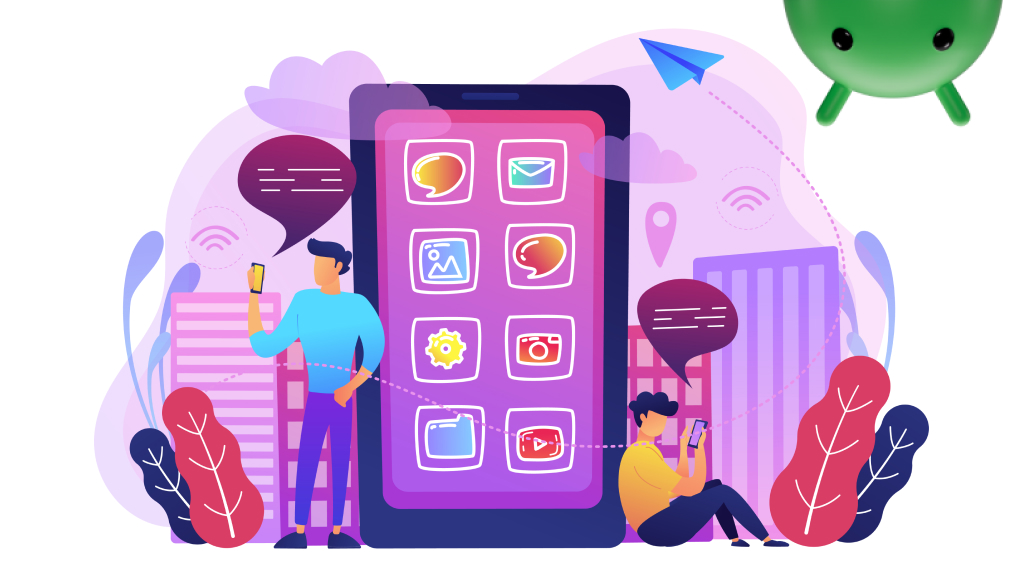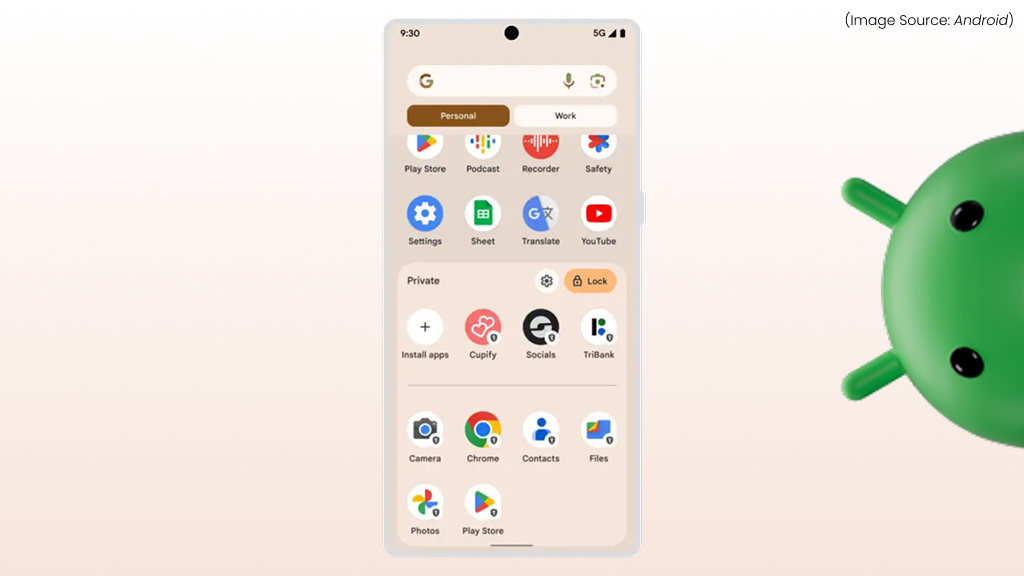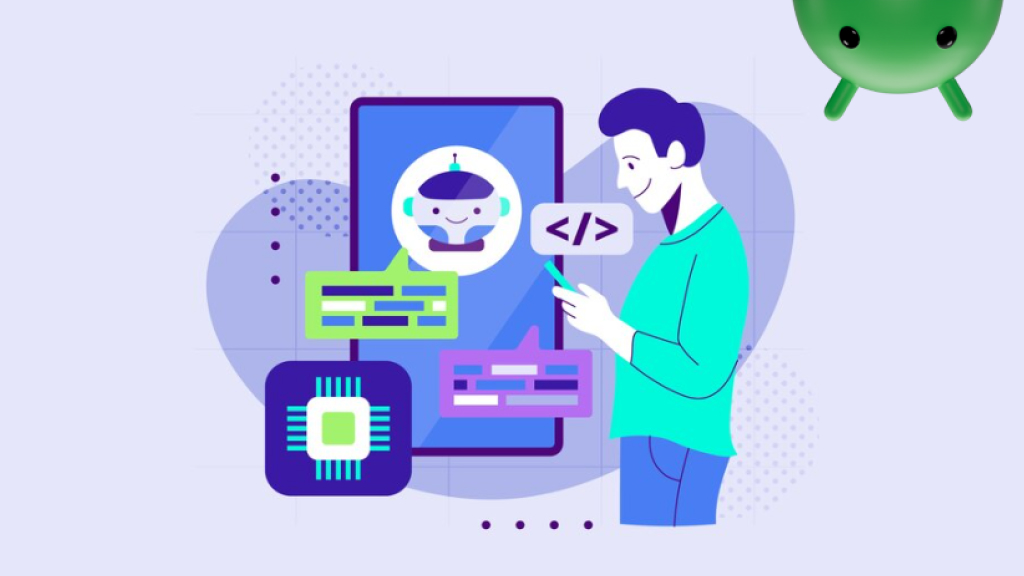
(Image Source: Android)
Since its launch in 2008, Android has been developed under the umbrella of the Android Open Source Project (AOSP). This open-source model allowed device manufacturers (OEMs), developers, and custom ROM communities to access Android’s source code, modify it, and implement their own versions.
However, recent reports suggest that Google may shift towards developing Android entirely behind closed doors. This move could have profound implications for the mobile ecosystem, smartphone manufacturers, app developers, and end users.
Beginning next week, Google will consolidate all Android development into its internal branches. This means that components currently developed in AOSP will now be handled privately, with source code releases occurring only when Google publishes new versions or updates.
This change is expected to simplify the development process by eliminating the need for constant merging between public and private branches. Several major tech companies have made similar shifts toward more closed development processes. Some key examples are Apple, Microsoft, Meta (Facebook), etc.
- Apple has always maintained a closed-source approach with iOS, macOS, and its entire hardware-software ecosystem. By controlling every aspect of development, Apple ensures tight integration, security, and a seamless user experience.
- Microsoft too has moved away from allowing deep customization and licensing flexibility. Windows 11 introduced stricter hardware requirements and TPM enforcement, further limiting third-party modifications.
- Meta has restricted access to its Quest OS (a modified Android) for developers outside its ecosystem. It also limits sideloading and third-party store integration, moving towards a more controlled environment.
Signs of a More Closed Ecosystem

Several indicators suggest that Google is increasingly controlling the development of Android:
-
Delayed AOSP Releases
In recent years, Google has delayed releasing source code for new Android versions until after the official Pixel launch.
-
More Proprietary Features
Many of Android’s key innovations, such as Google Play Services, are now closed-source and exclusive to Google-certified devices.
-
Stronger Control Over Manufacturers
Google’s Android Compatibility Commitment (ACC) mandates strict compliance with Google’s specifications.
-
Project Mainline and Google’s Influence
Google has shifted more system components to Project Mainline, updating them via Google Play rather than OEM-controlled updates.
-
Pixel-Exclusive Features
Features such as AI-powered call screening and Magic Eraser remain exclusive to Google’s Pixel line.
These changes hint at a future where Google develops Android behind closed doors while offering limited open-source components.
Why Might Google Move to a Closed-Source Android?

(Image Source: Android)
Google’s potential move toward a closed-source Android is driven by several key factors:
1. Security and Privacy Enhancements
- Open-source software is more vulnerable to exploits since anyone can analyze the code for weaknesses.
- By closing off Android, Google can enforce stricter security measures and roll out updates faster.
- A unified security model reduces risks associated with OEM and third-party modifications.
2. Greater Ecosystem Control
- Google wants to create a more consistent user experience across devices, similar to Apple’s iOS.
- A closed-source Android allows Google to standardize software updates and prevent excessive fragmentation.
- It ensures that Google services (like Play Store, Assistant, and AI features) remain at the core of Android.
3. Competitive Pressure from Apple and Samsung
- Apple’s success with iOS, which is entirely closed-source, gives Google a reason to tighten its control.
- Samsung is developing its own alternative platforms (like Tizen and One UI integrations), which could push Google to keep Android proprietary to maintain dominance.
4. AI and Proprietary Features
- Google’s advancements in AI, such as Gemini AI, require deep OS integration that is harder to achieve in an open-source model.
- Exclusive AI-driven features like Magic Eraser and Call Screening are easier to maintain in a controlled environment.
5. Reducing Regulatory Scrutiny
- Google has faced antitrust investigations over its dominance in the mobile OS market.
- Moving Android behind closed doors could help it avoid some legal complexities tied to maintaining an open-source AOSP while still controlling the core ecosystem.
Impact on the Android Developer Community

If Google moves Android to a fully closed-source model, it will have significant consequences for developers. App developers may experience more stability in APIs and system behavior since Google will have tighter control over updates. This could reduce fragmentation across devices, making app development more predictable. However, developers who rely on deep OS customizations may find it harder to modify system-level features.
For custom ROM developers and open-source enthusiasts, this change would be a major setback. Projects like LineageOS, GrapheneOS, and CalyxOS rely on AOSP for creating alternative Android versions. A closed-source Android would limit or even eliminate the ability to develop custom ROMs, reducing user choice and innovation.
Ultimately, a fully closed-source Android could lead to a less diverse and flexible development landscape, with Google exerting more control over how software is built and distributed. While app developers might benefit from consistency, the loss of open-source contributions would impact the innovation and customization that have long defined Android.
Impact on OEMs (Original Equipment Manufacturers)

(Image Source: Android)
If Google fully closes off Android development, it will have a profound impact on smartphone manufacturers like Samsung, Xiaomi, OnePlus, and others.
-
Reduced Customization Options
OEMs have traditionally used AOSP to create their own custom Android skins (e.g., One UI, MIUI, OxygenOS). With a closed-source Android, their ability to modify system-level features could be severely limited, leading to more uniform Android experiences across brands.
-
Increased Dependence on Google
A closed-source Android would force OEMs to rely even more on Google Mobile Services (GMS), making it harder for them to differentiate their devices. This could increase licensing costs and further solidify Google’s control over the ecosystem.
-
Regulatory and Market Challenges
Some manufacturers, especially in regions with strict data regulations (e.g., China, India, and the EU), may seek alternatives like HarmonyOS or revive proprietary OS projects (e.g., Samsung’s Tizen).
-
Potential Loss of Market Flexibility
Without access to AOSP, smaller OEMs and emerging brands may struggle to compete, as they would be limited to Google’s predefined system rules without the ability to innovate.
Impact on the Custom ROM Community

The custom ROM community, which thrives on modifying and improving Android, would face severe challenges if Google moves to a fully closed-source model.
Custom ROMs like LineageOS, GrapheneOS, and CalyxOS rely on the AOSP as their foundation. If Google restricts access to the core Android code, these projects may struggle to continue development, reducing options for users who prefer privacy-focused or performance-optimized alternatives.
Without AOSP updates, developers would be forced to work with outdated code, making it harder to integrate new security patches and features. Additionally, Google’s increasing reliance on proprietary services (like Play Services and Project Mainline) already limits how much custom ROMs can modify the system.
Impact on Users

For everyday users, a closed-source Android could bring both benefits and drawbacks. On the positive side, a fully controlled Android ecosystem would likely result in faster updates, improved security, and a more consistent user experience across different devices. Google could push updates directly without relying on manufacturers, reducing fragmentation and ensuring timely security patches.
However, the downside is reduced customization and control. Users who enjoy modifying their devices, such as removing bloatware, unlocking bootloaders, or flashing custom ROMs would lose these freedoms. Features that were once available through third-party modifications may become exclusive to Google’s own Pixel devices.
Additionally, tighter control over Android could lead to increased ads, data collection, and mandatory integration of Google services. Users who prefer alternative app ecosystems or privacy-focused Android versions may find their choices shrinking.
Google’s Assurance on Open Source

(Image Source: Android)
Despite the increasing signs of a closed ecosystem, Google continues to emphasize its commitment to open-source principles. The AOSP remains publicly accessible, allowing developers to build upon its foundation. Google has also stated that it will keep certain core elements open to maintain industry collaboration.
Google could adopt a hybrid model, where AOSP exists primarily for regulatory compliance, but real innovation happens within Google’s proprietary Android version. This would ensure that manufacturers and developers remain dependent on Google’s ecosystem while keeping a nominal open-source presence.
Will This Shift Affect Android Security Updates?

(Image Source: Android)
If Google moves to a fully closed-source Android, security updates could become faster and more consistent. Currently, Android’s fragmented ecosystem delays updates, as manufacturers must modify and test them before rollout. A closed system would allow Google to push updates directly, reducing vulnerabilities.
However, a closed-source model also means less transparency. Security researchers and developers who previously audited AOSP for vulnerabilities may no longer have access, potentially making Android security issues harder to detect.
While security could improve in terms of speed and efficiency, the lack of open review may raise concerns about hidden vulnerabilities and Google’s control over patches.
Google’s decision to develop Android entirely behind closed doors represents a pivotal moment in the evolution of one of the world’s most popular operating systems. While aimed at streamlining processes and enhancing efficiency, this shift also raises important questions regarding transparency and community involvement in open-source software development.
As Google navigates this new landscape, it remains crucial for developers and users alike to adapt to these changes while advocating for continued openness in the software ecosystem. The future of Android will undoubtedly be shaped by this transition, but whether it leads to improved user experiences or stifles innovation within its developer community remains to be seen.














